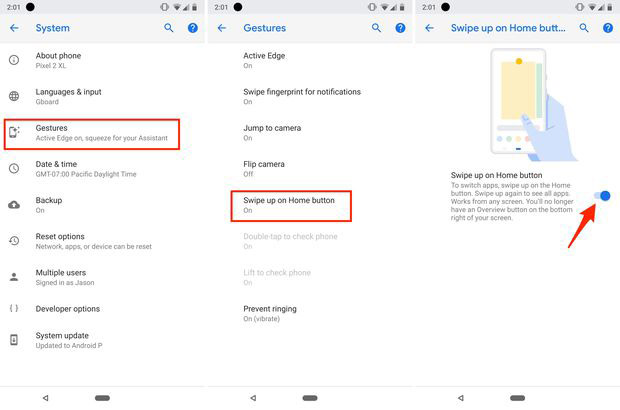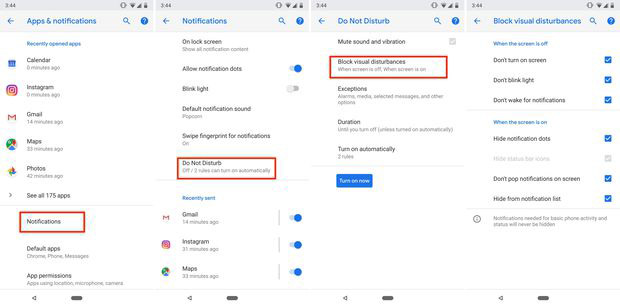3 newly changed settings of Android P
From developer tools to compatible rabbit ears like on iPhone X, such as smart notifications and a new way to navigate Android, Google's latest mobile operating system has There are many changes.
There is even a trial beta. But be warned that to return to Android Oreo, you will need to completely delete everything on your phone.
If you're brave enough to try it out, there are three settings that need to be checked after running Android P on your phone.
Gestures

With Android P, users have the option of removing the traditional three-button navigation method and replacing it with gestures.
If you decide to try the Android P beta, you may be disappointed to see this feature not enabled when first started. Instead, you must manually install and enable this feature.
Open the Settings application, then go to System> Gestures> Swipe up on the Home button . On the following screen, turn on the Swipe up on Home button.
From now on, you can swipe up on the Home button to view your recently used apps, swipe right to quickly switch between two apps or slowly move the Home button to scroll through all applications. Your recent use.
To return to the home screen instead of viewing recent applications, tap the Home button.
Action suggestions

Android P is becoming smarter and will start recommending applications and actions for you to perform throughout the interface. For example, when you swipe up on the new Home button (of course with Gestures already enabled), a yearly app will appear at the bottom of the screen. These applications are suggested based on recent regular use.
You will also see action buttons in the application trays for common tasks, such as opening an application to a specific section or starting composing a text message.
If you don't like these new features, you can turn off one or all of those features.
Press and hold your wallpaper, then press Home Settings . On the Home Settings page , select Suggestions . Move the adjustment button to the 'Off' position for applications, tasks and the ability to select the text in the app preview in recent view.
Do Not Disturb

Part of Google's plan to increase user satisfaction helps minimize distractions, making users return to using their phones as an enhanced Do Not Disturb feature on Android P.
Using Do Not Disturb on Android P will not only block calls and notifications when the phone is in standby mode, but also block the screen from turning on. Google is referring to the new feature " Visual Disturbances ".
Settings include blocking the notification light, turning on the screen and preventing the phone from displaying new notifications when the screen is off.
When the screen turns on, the settings include hiding notification dots, the notification block appears and hiding the notification list.
You can adjust the new Do not Disturb settings to work by going to Settings> Apps & Notifications> Notifications> Do Not Disturb> Block Visual Disturbances .
See more:
- What is special about Android P 9.0?
- Phone list can be on Android 9.0, Android P
- How to check and update the version of Android operating system in use
 Download 3D wallpapers for your phone with a wide variety of themes
Download 3D wallpapers for your phone with a wide variety of themes Instructions to restore deleted applications on Android / iOS
Instructions to restore deleted applications on Android / iOS Instructions on how to use voice chat in PUBG Mobile game
Instructions on how to use voice chat in PUBG Mobile game Please try the floating bubble music app on Android
Please try the floating bubble music app on Android Collection of animated wallpaper sets for phones with love themes
Collection of animated wallpaper sets for phones with love themes 16 effective English word puzzle games on Android and iOS
16 effective English word puzzle games on Android and iOS